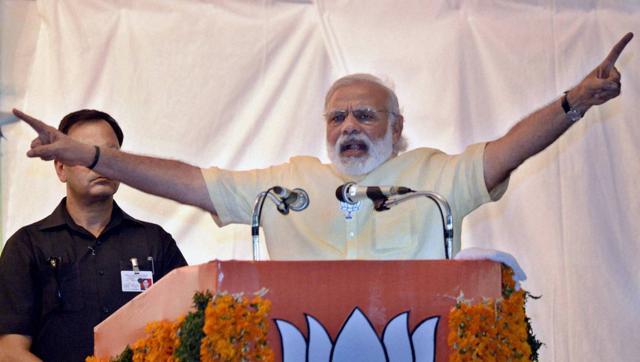Vijay Prashad
On April 24, thousands of demonstrators marched to the Angel of Independence monument in Mexico City from the municipality of Ecatepec. People from all kinds of backgrounds marched with signs that had the requisite dose of humour and anger. “Revolucion en la Plaza, en la Casa y en la Cama” (Revolution in the streets, at home and in bed), announced one woman, while another wrote on her pregnant belly: “Quiero nacer sin violencia” (I want to be born without violence). A resonant chant went “Ni sumisa, ni obediente. Soy libre, loca y valiente” (Neither submissive nor compliant. I’m free, crazy and brave).
The statistics explain the anger. Seven women are killed every day in Mexico. Over the past three decades, over 45,000 women have been killed. The passive voice is appropriate here. Over 95 per cent of these cases have not been properly investigated by the police and judged by the courts. The impunity rate is stunning. Two-thirds of Mexican women above the age of 15 report in surveys that they have experienced some form of physical or emotional abuse or discrimination at work.
The slogans for the march—“Vivas nos queremos” (We want to stay alive) and “Ni una menos” (Not one female less)—echoed other familiar slogans from earlier marches. During the disappearance of dissidents in the dirty wars of the 1980s in South and Central America, their supporters would mutter, “Vivos los queremos” (We want them alive) and “Ni uno mas” (Not one man less). This slogan has returned to Mexico, says Aurelia Gomez Unamuno, whose forthcoming book, Memoria y violencia, studies the memories and testimonies of Mexican guerrillas of an earlier era. In the most recent instance, 43 students from the Ayotzinapa Rural Teachers’ College in the State of Guerrero vanished in September 2014. Their families and friends continue to fight to find out what happened to these young men who were training to be rural schoolteachers. “We want them alive” is the slogan for the “disappeared”. “We want to stay alive” is the slogan of the women.
Forty-three students’ disappearance
In 1968, as part of the Dirty War, the Mexican state massacred hundreds of students in Mexico City’s Tlatelolco section. Each year, there is a large demonstration at the Plaza de las Tres Culturas (the Plaza of Three Cultures), the site of the massacre. In 2014, the students at Ayotzinapa went off to commandeer buses so that they could go to that demonstration on October 2. These students were mainly indigenous Amerindians, one of the three cultures of Mexico (pre-Colombian, colonial Spanish and Mestizo). Masked men and the police ambushed the buses on their way back to the campus. Six students died at the scene. One bus, with 43 students, vanished. The government said that the local drug gang, Guerreros Unidos, had killed the students and incinerated their bodies. This, said Attorney General Jesus Murillo Karam, was the “historical truth”. They wanted the case, as with other cases, to vanish.
The families and friends of these missing students would not back down. Their perseverance caught the imagination of others in Mexico and across Latin America. Pressure on Mexico’s President Enrique Pena Nieto pushed him to allow the Inter-American Commission of Human Rights to send a team of five experts to investigate the disappearance. Mexico has been protective of its sovereignty. This was a historic capitulation to the demands of its people and recognition of the failure of its own investigative mechanisms.
Pena Nieto assumed that the panel’s work would be perfunctory, the writer Francisco Goldman told this writer. Goldman’s book The Interior Circuit: A Mexico City Chronicle (2014) eerily foretold the collapse of the golden story of Pena Nieto.
With his typically careful eye, Goldman has been following the investigation into the “43”. Goldman watched as the commission, known as GIEI, worked “seriously, with an obsession”. The Colombian prosecutor Angela Buitrago went over 185,000 pages of the old case file, while Guatemala’s former Attorney General Claudia Paz y Paz analysed the documentation with her well-known rigour. GIEI invalidated the government’s case. Attacks in the establishment media came alongside a cold shoulder from the government. “The conditions to conduct our work don’t exist,” said Claudia Paz.
What did the experts at GIEI find? That Guerreros Unidos had used buses to smuggle heroin and cocaine to the United States. It was likely, they suggested, that one of the buses commandeered by the students carried large amounts of drugs. Gunmen of the gang alongside soldiers and policemen blocked the highway most likely to recover that bus.
Complicity between the Mexican establishment and the world of drugs is well documented, most notably by the investigative journalist, Anabel Hernandez, in Narcoland.
Christy Thornton, a historian of Mexico, told this writer: “The federal government is seeking desperately to protect itself.” That its Attorney General would muddy the waters “is a sign of just how high up the corruption goes”. The drug trade has overwhelmed the Mexican economy. The journalist Carlos Loret de Mola says that the drug cartels are three times more profitable than the five hundred largest Mexican firms. It is little wonder then that drugs might have played a role in this tragedy, or that the Mexican establishment would go to such lengths to hide the story.
‘Of little value’
In his book The Femicide Machine, Sergio Gonzalez Rodriguez writes of the people “who are considered of little value”. These are the 43 students, surely, but also the tens of thousands of women whose murders have not been investigated.
Ten days before the April 24 protest, Luisa Carvalho, the regional director of the Americas and the Caribbean for U.N. Women, spoke in El Salvador at the release of a report on femicide. “Femicide and other forms of violence against women in the region continue to grow,” she said, “and the application of justice continues to be limited with a rate of 98 per cent impunity for the offenders.”
Governments seem uninterested in these crimes. A United Nations report from 2003 laments “the relative incapacity of the state to adequately solve these cases”. A fog grows over them. People begin to think of them as mysterious, when in fact there are very clear reasons why these women are being killed.
“The ongoing death toll is not mysterious,” said Rosa-Linda Fregoso, author of Feminicidio en America Latina. “It is a consequence of the historic structure of impunity in place in Mexico, the failure on the part of the Mexican state to adequately prevent and investigate violence against women at all levels.” Aurelia Gomez told this writer that the violence takes place out of a combination of “machista rage, drug cartels protected by authorities, and permissiveness from the authorities in general”. In 2007, Senator Marcela Lagarde Rios, who coined the term Feminicidio, pushed through the General Law to Provide Women with Access to a Life Free of Violence. Despite the presence of this important law, Fregoso said, “Mexico’s judiciary, legislative and criminal justice sectors are staunchly patriarchal.” The disregard for crimes against women is normal.
‘The state did it’
The Mexican state, says Aurelia Gomez, efficiently dismantles social movements—workers and peasant unions, teachers and students’ organisations. But the drug cartels remain intact. Plan Merida of 2008 links Mexico to the U.S.’ Global War on Terror, with the new term of art being “narco-terrorism”. Funds from the U.S. government flood Mexican law enforcement agencies, which use this new money and equipment to break one drug ring in order to profit another.
“Blood, death, threats, exploitation, weapons, unlimited profits; this is the big business created by the illegality of drugs,” writes Rodriguez in The Femicide Machine. There is little hope in the state’s institutions for the families and friends of the 43 and for those who marched on April 24. Drug cartels are in the blood stream of Mexican institutions. To expect the Mexican state to tackle this would be like presuming a heart surgeon could do an open-heart operation on herself. At protests for the 43, a common slogan is “Fue el estado” (the state did it).
At the last public meeting of GIEI, the families and friends of the 43 shouted: “No se abandona” (do not abandon us).
There was a feeling, says Francisco Goldman, that with the departure of the international commission, nothing will happen. It is a feeling shared by the families of those who have disappeared. Justice eludes them. They indict the state. Who will give them justice from the state? “These people live in an abyss,” Goldman told this writer. “They are forced by the state to live in the shadows, as a ghost with your ghosts.”






